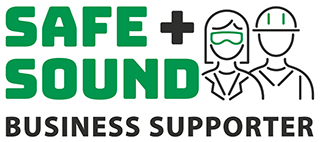

Building a Safety Culture Roundtable
By Grainger Editorial Staff 7/1/19

OSHA also invites organizations to share and celebrate their successes with Safe + Sound Week each August. Visit OSHA’s website for activity ideas and more.
The Grainger Insights roundtable hosted a lively discussion about safety culture. Topics included spotting red flags, identifying the pillars of a positive safety culture, and selling the importance of safety culture to senior leaders. Shayne Stevens, Joseph Freeman and Scott McCormick joined Grainger's Travis Kruse, Senior Director, Safety Strategy and Solutions, for the discussion.
On the red flags that indicate a troubled safety culture
Shayne Stevens says he considers morale, attitude, and worker happiness. "I look at the overall wellness of the employee. If they're working too many hours, if they don't feel comfortable with what they're doing... I can take a look at that and get a gauge."
Joey Freeman draws on his experience working with clients in many industries across the country. What he looks for is consistency in how people at different levels of an organization understand the organization's procedures. He says there can be major differences between how a process is understood at a corporate level and how the workers think of it. It can indicate a problem when workers think, "Well, they tell us to do it this way but it's better this way so this is the way we do it."
Stevens adds that this is why it's important to have a relationship with field employees: "That's where you're going to get all your information and that's where you're going to get the complaints—you'll get to see what's really going on."
Scott McCormick says that you can learn about an organization's safety culture by observing something as simple as housekeeping: "If they're not even taking the time to pick the trash up, usually that's a sign of something bigger." Quality is another indicator: "If it's a job where we're seeing a lot of rework, usually that's a sign that things just aren't right with that company... If safety's bad, other things are bad, too."
On the pillars of a positive safety culture
Stevens says that employee engagement is critical, and that upper management support encourages it: "If the employees know that there's support from above, they're going to do everything they can to work as safe and as productive as they can on the job site."
Freeman adds that senior leadership involvement is also important, especially when it's authentic and participatory: "When employees see upper management interacting with employees and asking [about] safety elements, that sends a different and often more powerful message than the CEO of a company opening up on the safety training video expressing his support."
Stevens says that when director-level executives open up meetings with conversations about safety, "that sends a powerful message."
On selling safety culture to company leaders
Freeman says that safety professionals need to know their audience. P&L and ROI are concepts that can show how safety culture is connected to the bottom line: "[Profitable business is] their ultimate goal. The better we do at correlating the activities that are involved with the safety culture to the bottom line, I think the message becomes much more impactful."
Stevens offers a simple formula for getting leadership buy-in: "I think more than anything just being truthful and establishing your credibility. It's one thing to come in with a problem, but also have a solution, be solution-based."
McCormick agrees that costs are important in discussions with senior management: "They have to do that. Their job is to keep the company profitable. I hate breaking people down into a cost, but that's essentially what we have to do to justify some of these programs."
The information contained in this article is intended for general information purposes only and is based on information available as of the initial date of publication. No representation is made that the information or references are complete or remain current. This article is not a substitute for review of current applicable government regulations, industry standards, or other standards specific to your business and/or activities and should not be construed as legal advice or opinion. Readers with specific questions should refer to the applicable standards or consult with an attorney.






